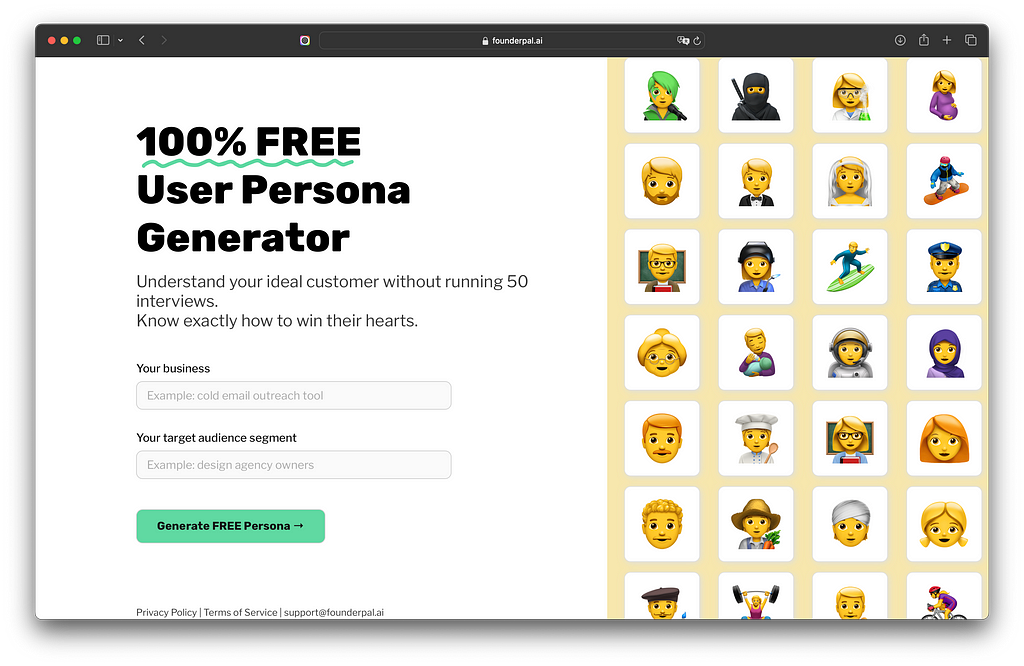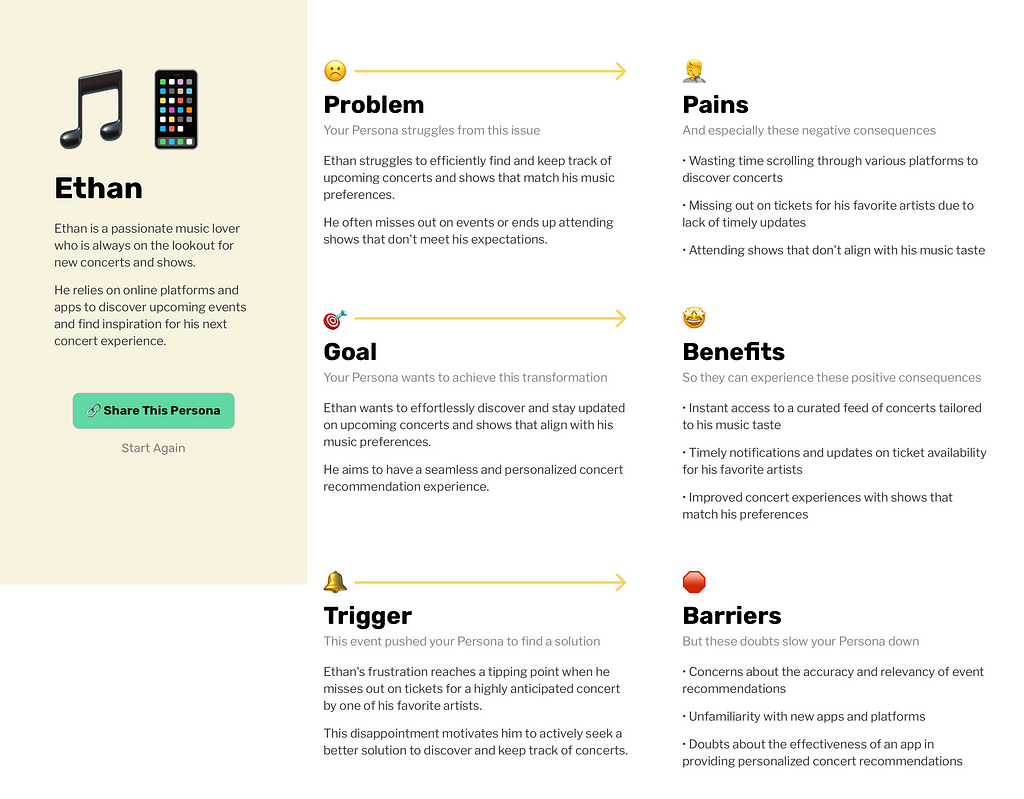Whether it’s user research, strategy, or product/service design: If you trust random AI tools without intention, your output will be as tasteful as overcooked spaghetti at a fake Italian restaurant.

I have used AI-fueled tools to ideate, write, plan travels, get inspiration, generate images, or replace Google search at times. I am intrigued and excited to see what these tools are capable of and how fast they improve.
However, with the entire world going AI, there is an array of tools that are starting to emerge that are questionable. While preparing for a lecture at Hochschule der Künste Bern | Bern Academy of the Arts , I researched AI tips, tricks, and tools for my students. As much as I was intrigued with some tools, I was disgusted and concerned with others.
This is an article about my experience with such a tool and what I learned from it.
The gold diggers
As it happens in a gold rush, everyone wants to jump on the bandwagon and make a quick buck, which leads to some companies’ over-promising, false advertising, or missing the point.
This circumstance is especially problematic when you start in a field and lack the experience and background to question and judge AI output critically.
It might lead to bad and wrong decisions, actions, and outcomes in the overall process.
I want to highlight a tool I came across in this regard.
The AI persona promise & the question: Who are we designing for?
In the spirit of “there is an AI for that”, I evaluated a tool that would help me create a UX persona for a potential product idea of a “new” event recommendation platform.
Let me introduce you to the “100% free persona generator” by founderpal.ai. The company offers a whole suite of free tools for founders. While they might not have bad intentions, it’s where it starts to get a bit suspicious.
As we have learned from OpenAI, running large language models doesn’t come cheap (article by Forbes).
Further reading “founderpal.ai’s” marketing promises (probably AI-generated) makes me raise my eyebrows again.

Let’s dive into it, shall we?
- “100% FREE” — Sounds too good, and there is no other visible disclaimer or a pricing link (spoiler — they seem to use it as a marketing tool to get your email address and cross- and upsell you later).
- “Understand your ideal customer…” Who are my ideal customers? Don’t we want the “ideal” solution to real people’s problems rather than an ideal “customer”? Let’s give them the benefit of the doubt, assuming we have no clue who our brilliant product idea is for.
- “…without running 50 interviews.” Who told you to do 50 interviews? It is a bit more complicated than that (article by Nielsen Norman Group). Furthermore, persona data can come from various sources. On top of that, isn’t the point of doing interviews to talk to real people and get to know and understand them? Doing so could be especially beneficial, assuming we want to find the “ideal” customer we do not know yet.
- The two form fields are straightforward and even offer specific wording suggestions to get the perfect result. It seems much more convenient than learning proper and advanced chatGPT prompting. Let’s assume we know the target audience segment of our “ideal” persona we do not know yet. So, I added my prompts:
Form field: Your business: A revolutionary concert recommendation app that showcases upcoming shows in a TikTok-like manner.
Form field: Your target audience: People of any age who are music-savvy, love to go to concerts, find inspiration online, and use corresponding apps.
After a short wait….
The AI persona — the good & the bad
Here is our free persona, including a quick high-level summary and sections covering problems, pains, goals, benefits, triggers, barriers, and even an action plan (if you give them your email address to unlock it).

At first sight, it looks pretty ok. There are some valid points in the document. Then again, that’s where the problem starts. First of all, why is my persona male? We leave that question open.
Going on…
Vivid but generic common sense
Much of the text is a vivid re-phrasing of the original prompts.
When reading through the specific problems, pains, goals, and benefits, you quickly notice that much of it is generic and common sense if you have a minimum amount of experience in the field and could apply to anything. That could be a pro for the tool. Why do the obvious yourself if an AI can do it?
We all want convenience, personalized, and tailored content, services, and products, and we do not want to waste time. That said, the persona could fit a movie, holidays, or a recommendation service for pants.
Isn’t anything more annoying than searching for and finding the right pair of pants?
Specific but made-up assumptions
Some parts of the content are straight-out made-up assumptions or potential AI hallucinations (false or misleading information presented as fact according to Wikipedia). These pieces of content might not be wrong, but we do not have any proof of accuracy.
That’s where it all falls and misses the point of a persona:
“Personas are distilled essences of real users… You should always create personas from observations about real users, personas should never be invented out of your assumptions about your users (Interaction Design Foundation)”.
Takeaway:
Relying on certain AI is akin to eating a Big Mac — satisfying at first, but potentially harmful if done relentlessly and all the time.
While AI tools can add significant value to the design process, it’s crucial to understand their capabilities and limitations and act accordingly.
Be aware of:
- There are (false) promises that might be problematic when using some AI tools in a domain one is unfamiliar with or new to.
- Following and using AI output without necessary reflection might lead you to building yet another mediocre and generic product that misses the point or in the worst case causes harm.
- Furthermore apart from ethical concerns, there is research and articles highlighting the shortcomings of generative AI tools such as misinformation and how humans are likely to fall for it (article by MIT Technology Review).
Therefore:
- If you want to build products that solve real human problems, address people’s needs, and spark joy, you should still involve humans in our process and get to know their needs and pains.
- So, before we use AI for anything, we should probably think about the “how and why”, be critical and maybe even reconsider.
- “Use generative-AI tools to support and enhance your UX skills — not to replace them”, advice on using AI for UX by Nielsen Norman Group.
Agree or disagree? Feel free to comment or give me a shout.
In the spirit of:
Why should someone bother to read what you didn’t bother to write (WRITING WITH AI — brilliant piece by Information Architects株式会社 (iA)?
Thank you for reading.
I wrote this article with my own hands, sweat, blood & tears using Grammarly, TextEdit, and went through some additional proof-reading, spell-checking and critique iterations with ChatGPT and human iterations with Adrian Zumbrunnen (and it’s probably still not perfect).
Think twice before you AI the day away was originally published in UX Collective on Medium, where people are continuing the conversation by highlighting and responding to this story.

Leave a Reply